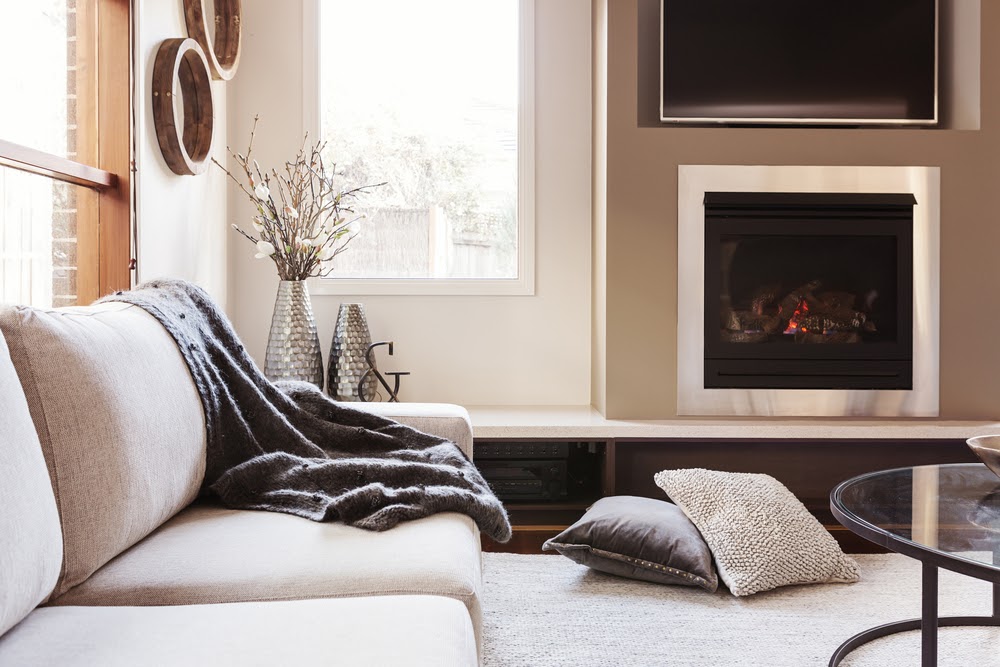An Energy-Efficient Fireplace Heater Raises the Temperature without Raising Utility Bills
During winter time, homeowners may compensate for the colder outdoor temperatures by turning up the thermostat to stay warmer. Others may clean out the fireplace and start a blazing fire to boost the home’s temperature.
Unfortunately, both solutions are wasteful and can cost homeowners more at the end of the month. Heating and cooling costs accounts for the majority of the home’s energy use, so bumping the thermostat boosts the price of the bill. While standard fireplaces are energy drains, homeowners could use an energy-efficient fireplace heater to stay warm without adding to energy waste.

What is an Energy-Efficient Fireplace Heater?
An energy-efficient fireplace heater is the same as an energy efficient fireplace. This is simply a more economical choice than the standard wood-burning fireplace. While a traditional fireplace may seem to keep the home warmer, the chimney actually is nothing more than an energy drain.
A traditional fireplace allows lots of warm air to escape the home, causing the furnace to work overtime. The Environmental Protection Agency explains: “Fireplace drafts can pull the warm air up the chimney, causing other rooms to be cooler.”
The solution isn’t to avoid fireplaces entirely, but, rather, to choose energy-efficient fireplaces. Traditional fireplaces could even be converted to a more energy-efficient option. Bob Vila suggests a gas-burning fireplace insert.
Most Energy-Efficient Fireplace Heater
Homeowners could choose between gas and electric fireplaces. Gas is noted to be cleaner than wood-burning fireplaces. Homeowners do need to pay for the price of the natural gas, though. These fireplaces are easy to turn off and on, which gives homeowners a bit more control than the standard wood-burning blaze.
Electric fireplaces are another energy-efficient option. These options don’t need a flue, unlike wood and gas. This type of fireplace may be what many homeowners consider to be an ‘energy-efficient fireplace heater.’ VolunteerEnergy states that electric fireplaces are the most energy-efficient option.
Electric fireplaces are an inexpensive option, and some models let homeowners enjoy the flickering flames without turning up the heat! The screen can project the flames, and homeowners can simply not turn on the heating component of the fireplace.
Electric models also can automatically turn off. These models also include fake flames, which mean that homeowners don’t have to risk sparks flying out of the fireplace. Homeowners also can control the temperature; this isn’t a feature that gas or standard fireplaces offer.
Safety of Electric Fireplaces
While electric fireplaces include fake flames, there still could be issues related to fire risk. Homeowners need to ensure proper installation. Also, This Old House explains that these units should not be plugged into a power strip, and homeowners shouldn’t use a power cord.
The site offers other safety suggestions. As with all fireplaces, keep any objects away from the heat. With electric fireplaces, this means fans and heaters should not be near anything that could catch on fire. Homeowners also should ensure the safety of pets and children. The fireplace should be kept dry and should be used indoors.
Are Energy-Efficient Fireplaces Expensive?
Electric and gas fireplaces can be found at different price points. In addition, electric models can be found for mounting on the wall, placed in the corner of a room, as an insert to another fireplace or just as a standalone model. Some electric models are designed to look like traditional fireplaces, but homeowners also can find options that look like stoves.
How much does an electric fireplace cost to heat the space? The price can depend on a few factors. However, Learn Metrics offers homeowners a convenient tool to calculate the cost of their electric model.
On average, Learn Metrics explains that it costs about $0.20 to operate an electric fireplace per hour. Again, though, this cost could vary. Some states have higher electricity costs than others.
A gas fireplace maybe even less expensive to operate. The site explains that a 10,000 BTU fireplace only cost $0.15 per hour to use. This is five cents cheaper per hour than the electric option. However, a 20,000 BTU costs about $0.29 per hour.

Gas or Electric Energy-Efficient Fireplace Heater
Whether homeowners choose a gas or electric energy-efficient fireplace heater may be entirely about personal preference. Both are energy-efficient options. Both are fairly inexpensive to operate.
What’s clear, though, is that homeowners with a standard fireplace should ditch the logs if they don’t want their furnace running on overtime. Standard fireplaces can be converted to a more energy-efficient option to help homeowners save energy and money on heating costs.


